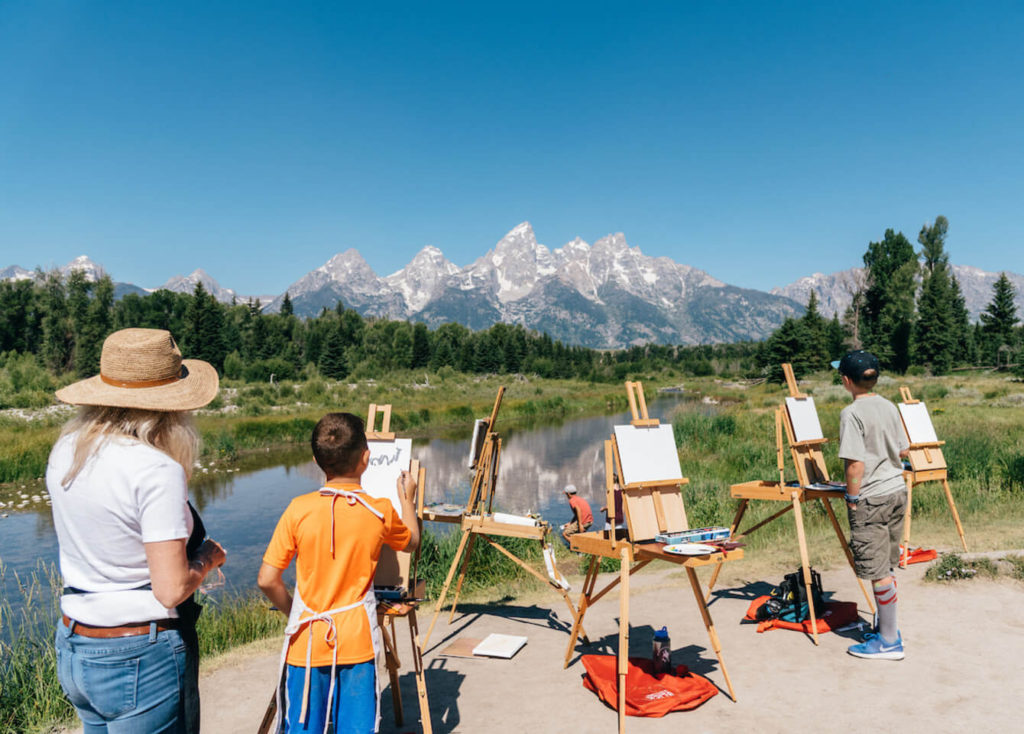Source: Art Vibrancy | August 29, 2019
Jackson Hole, WY – Jackson Hole ranks first on the list of the most arts-vibrant small communities in the United States according to the recently released research by SMU DataArts, the National Center for Arts Research at Southern Methodist University in Dallas. On August 20, SMU DataArts released its fifth annual Arts Vibrancy Index, which ranks more than 900 communities across the country, examining the level of supply, demand and government support for the arts in each city. The report highlights the top 20 most arts-vibrant large communities and the top 10 medium and top 10 small communities.
According to SMU DataArts, the Jackson, WY-ID, Metropolitan Statistic Area (MSA) is a mountain community of great beauty and innovation that includes both Teton County, ID, and Teton County, WY. All art forms are represented here, and at times have been recognized nationally or internationally for excellence.
The area is home to the National Museum of Wildlife Art, which offers a Sculpture Trail in addition to its indoor, permanent collection.
“We are grateful and excited to be part of what makes our Jackson Hole art community so vibrant,” said Steve Seamons, Director of the National Museum of Wildlife Art.
With a 78,000- square-foot campus, Center for the Arts is a community-wide cultural and educational facility that serves to shelter and nurture the artistic core of Jackson Hole. The Center provides a space for 19 independent cultural and educational Resident organizations to flourish. The theater, studios, and classrooms are abuzz with activity nearly every day of the year, thanks to programs offered by Residents, community organizations, and The Center’s own creative initiatives. Some of the Resident organizations include Off Square Theatre Company, the Jackson Hole Community Band, Jackson Community Theater, the Jazz Foundation of Jackson Hole, the Jackson Hole Chorale, and pARTners, an organization that integrates arts into school curriculum.
“Jackson is a small town with a big heart and a deep commitment to creativity. Many people forget that ‘creation’ and ‘recreation’ are branches on the same tree. People live and visit here in large part because our beautiful setting and national parks refresh and restore the spirit, and this is the same reason in the end that people turn to the arts as well. Look for even greater things as we continue to develop this vision,” remarked David J. Rothman, President and CEO of The Center.
The Grand Teton Music Festival is a nationally and internationally recognized organization that presents over 100 events throughout the year, including monthly community concerts featuring regional talent; broadcasts from the Metropolitan Opera’s Live in HD series; a Winter Festival in February; and a flagship Summer Festival that unites 225 of the nation’s top orchestral musicians for seven weeks of chamber and symphonic concerts. The New York Times, the Chicago Tribune, The Wall Street Journal, BBC Music, and The Telegraph have named GTMF as a top summer music festival.
Strong mid-sized and smaller organizations include the Dancers’ Workshop, Jackson Hole Public Art, and the Art Association of Jackson Hole. The Jackson Hole Wildlife Film Festival is an internationally known organization that provides film awards for the wildlife film industry and is a powerhouse in arts education programming. Jackson Hole ranks 9th on independent artists per capita and 6th on overall Arts Providers.
“For 58 years, the Grand Teton Music Festival has had the privilege of serving Jackson Hole and its growing interest and enthusiasm for arts and culture. Although the musicians of the Festival largely hail from major orchestras in North American, the musicians cross-pollinate and collaborate with many of the artists and musicians who call Jackson Hole home. It is our hope that this symbiotic relationship will continue to add vibrancy to the local arts scene for decades to come,” says Andrew Palmer Todd, President and CEO of the Grand Teton Music Festival.
“Arts and cultural organizations exist throughout the nation, serving communities both poor and affluent, rural and urban,” said Dr. Zannie Voss, director of SMU DataArts. “Their widespread distribution testifies to the human need for creativity and artistic expression. They are also engines of community development and community cohesion. In 2018, arts activity in every U.S. Congressional District in the country benefited from federal funding from the National Endowment for the Arts. The current climate of political, socio-cultural and economic polarization makes it more important than ever to recognize and celebrate the essential role that arts and culture play in making communities throughout the country not only more vibrant places to live and visit but also more unified, safe and tolerant.”



